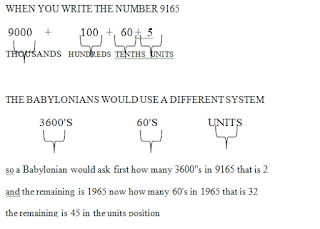After discussing the Amorites, it is
time to discuss the their greatest civilization "BABYLON" named after the
city of Babel which means the gate of the gods. Since so many events took
place, we will concentrate on their political system and scientific marvels.
The first Babylon dynasty ( 1830 BC –
1580 BC)
They had 11 kings in all but we will
pick the ones that made a huge difference:
1 – Sumu-Aboom ( 1830 BC- 1817BC) was the first king of Babylon, he did not care much about building, science or art, except for a few temples in Ur. He made use of the terrible amnesty between the rulers of Isen and Larsa and expanded his city to include the famous city of Kish and faced the Assyrian prince Eylo-Shuma when he occupied Dalbat in the North.
2 – Somula-Elu (1816 BC – 1718 BC)
was the second king, he occupied all the Akkadian territory including Sippar and
Akkad. He also changed the main gods from the ancient Amuro to Merdoch and also
gave the godess Ishtar a very high position thus changing the whole Sumerian -
Akkadian theology .
3 – HAMURABI (1728 BC – 1686 BC) The sixth king
of Babylon and the greatest, he used his wisdom and strength to make Babylon an
empire by unifying all of Iraq and occupying both Elam and the Levant. He was
surrounded by enemies so he had to make treaties some times and sometimes go to
war
As seen on the map Yamut-Bal that extended
from the east of the Euphrates all the way to Elam and was backed and an ally
of the Elamites and was ruled by Rim – Seen. In the North the Assyrian's, lead
by the famous Shamshi-Od, and to the West was Mari ruled by Zamri- Lam an
Amorite that preferred to deal with the Levant instead of Babylon.
So he starts his conquest by first invading all Assyria including their capital at the time Ashur. Afterwards, he immediately made a peace treaty with them to cover his back while invading Yamut- Bal which he did and even went west to occupy all of Elam. Finally he drove east and destroyed Mari and burnt Zamri – Lam palace. It was time for him to start building his new empire and set forward the laws that governs the people and state by inscribing it on a hard basalt stone 7.4 ft. high now available in Paris. When you read those laws you cannot help but recognize the greatness of these people and the sophisticated society they had which required such laws. The society was divided into 3 casts : the Awilum whom where the free and the rich, the Mushkinum whom were free but poor and finally the Wardum whom were the slaves whom according to the laws they were paid according to the job he completes, and these are the 12 sections or chapters of Hamurabi law,
1 – the army
2 – slaves rights and duties
3 – buying and selling
4 – amusement
5 – fines and reimbursement
6 – price control
7 – animal wages
8 – family matters
9 – the filed and the house
10- commerce and merchants
11 – stealing
12- witnesses and judiciary system
Their numeral system was just like the Sumerian was a Sexagesimal meaning based on the number 60 and not on ten like we do, arguably we used the tenth system which the Sumerians used in the beginning because we have ten fingers, but they used 60 instead because of the many numbers that divide by 60, like 1,2,3,4,6,10,12,15,20 and30,which makes the use of fractions less and easier to use with their astrology measurements. And they had 2 symbols only
the one on the left is 10 and the
sticks like are 1 each.
And this is their numeral system
Number 60 is exactly like number one,
but of course will be on the left with a gap and the rest of the number,
complicated not really once you learn it
And the result would be
They used
the gap to denote the positional value and this was one of their inventions,
they were so brilliant in math that they figured the value of π to be 3.125
which is close to what we use now which is equal to 3.14, this allowed them to
calculate arches, circles dimensions etc…,
Several tablets were found regarding math and geometry but the most important are the Yale, Colombia universities and Sosa tablets
Yale tablet
shows their understanding of the value of root 2 and this example shows a
square of side equals 30 x root 2 equals the length of the diagonal
They also knew the
Pythagoras theorem of right angles more than a thousand years before the Greek
mathematician.. We have to admire their work especially if we always remember
it was done 3715 years ago according to the Sosa tablet below




























